How to Set Up Facebook (Meta) Pixel & Conversion API Tracking
Follow the step-by-step guide to launching your Facebook Pixel & CAPI integration through Elevar's server-side destination
Prerequisites
In order to deploy Facebooks server-side conversion tracking you'll need to install our Shopify Source. Follow our guide on How to Implement the Shopify Source.
Step 1: Add Facebook as a Destination
- In your Elevar App, navigate to My Tracking > Select Add Destination > Find and select Facebook.

- You'll be taken to an Overview Page, select Get Started

Step 2: Select your Events
By default, we've already selected the standard recommended events for you! Most likely, you won't need to adjust anything and can just select Save to continue to the next step.

If you do want to customize your events, you can choose what events you'd like to send to Facebook & how you'd like to send them (e.g. via server-side or via the web browser). Facebook recommends sending data both via server-side & client-side; Facebook will deduplicate the data for you.
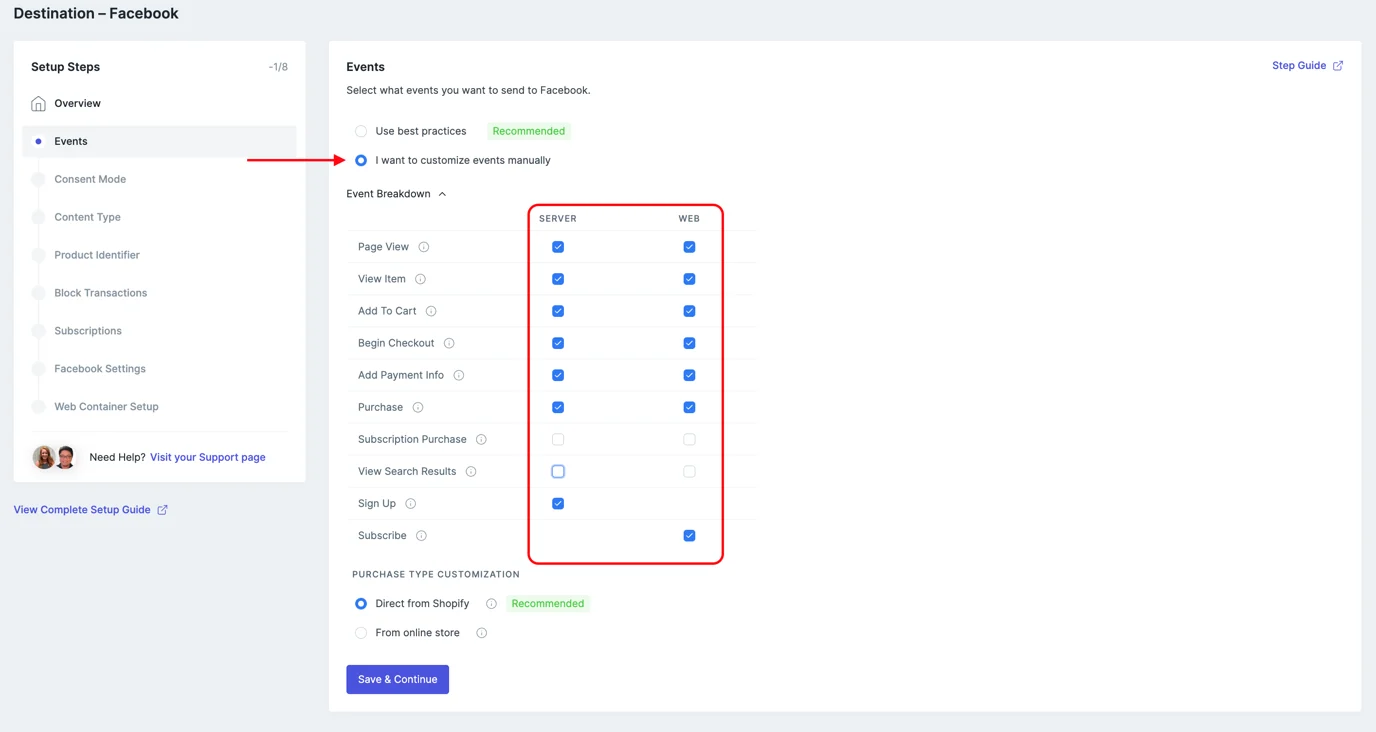
Step 3: If applicable, Enable Consent Mode
If consent is required, follow these steps to enable consent mode & select your consent categories.
If consent is not required, select Save & Continue.
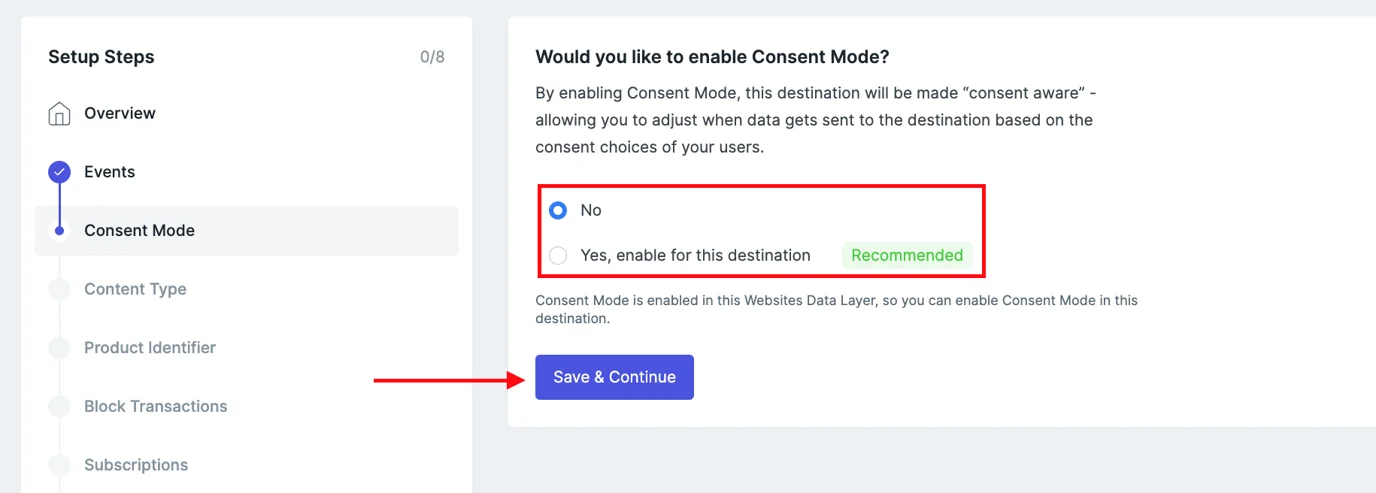
Step 4: Select your Content Type
Most merchants use Product Group as the Content Type & send the Product ID as the Product Identifier. This is the default setting for native Shopify Facebook app integrations.
If your Product Catalog uses Variant ID as the primary identifier, select Product as the Content Type & send Variant ID as the Product Identifier instead.
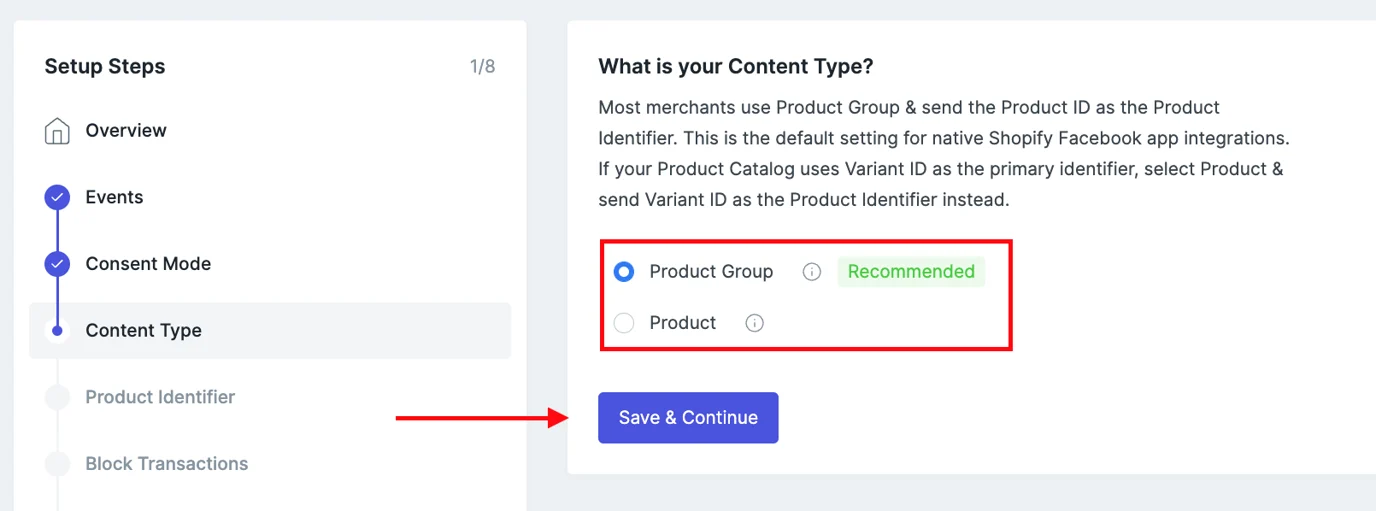
If you want to learn more about this setting, visit this Facebook article.
Step 5: Select your Product Identifier
Product ID is the most common primary product identifier in Facebook catalog integrations. You'll want to match the product identifier used in your Facebook tracking to the product identifier you use in your Facebook Product Catalog.
Tip: Migrating from the native Shopify <> Facebook Channel?
Then leave this as Product ID. The Shopify <> Facebook Channel uses the Product ID by default, so this will map over as you currently have it.
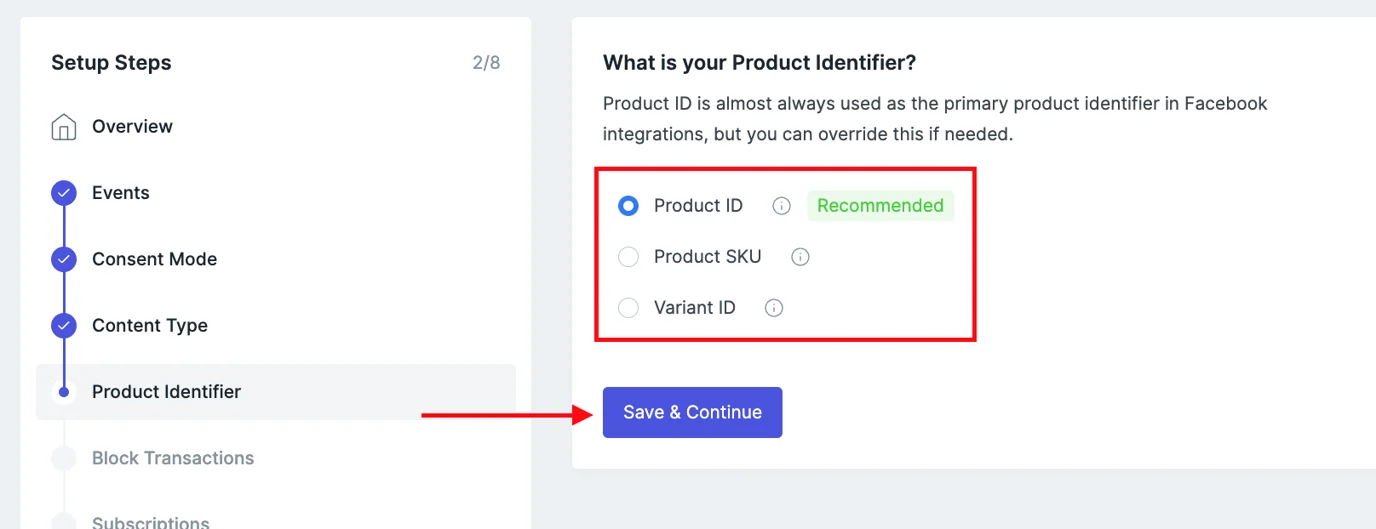
Step 6: Block Transactions
This step allows you to control exactly what purchase events are sent to Facebook's Event API. You can block orders based on Source Channel Names, Order Tags or Order Gateways.

Best Practice for Facebook is to block exchange orders and the Facebook offline sales channel. Facebook channel orders already exist in Facebook and passing orders from this channel will lead to duplication.
The most common other scenario where retailers may want to block or send orders is with offline orders. Learn how to block these orders in this guide.
Not sure if you need to block orders? Look at what Sales Channels you have in Shopify!
Step 7: Configure Subscription Settings
Do you sell subscription products? If you do, you can choose to send first-time orders only or first-time + recurring orders to your marketing destination.
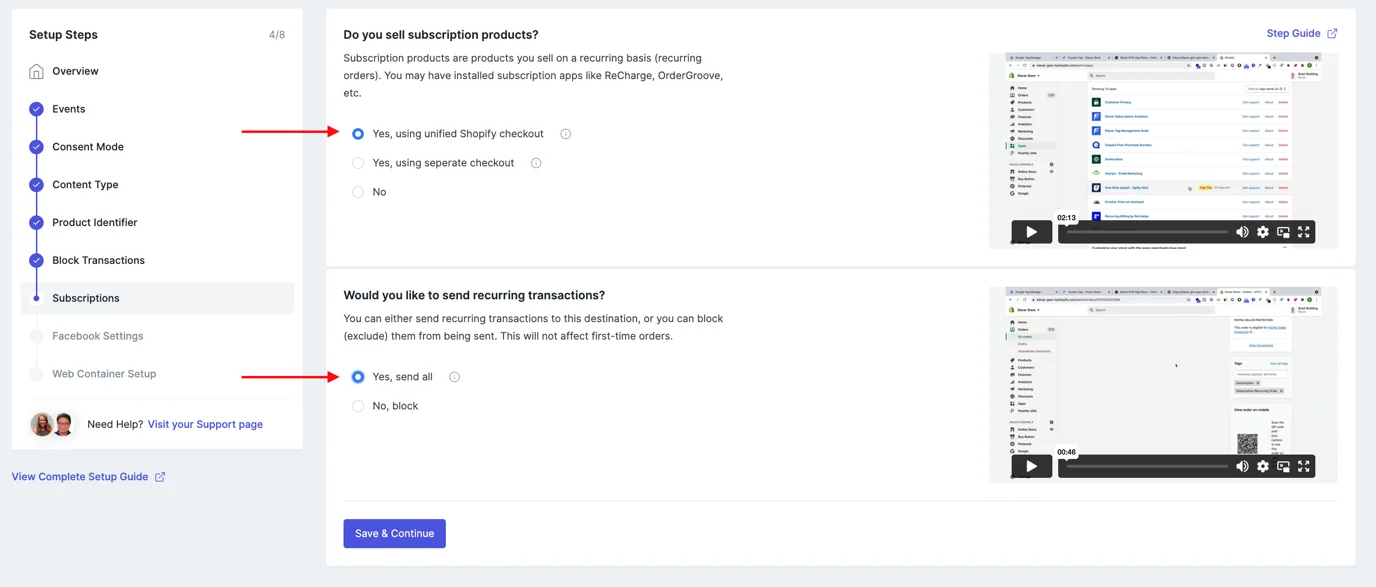
When sending recurring orders, we automatically set the action_source to "system generated" per Facebook guidelines on these types of orders.
Learn more about this Facebook parameter setting here.
Step 8: Update Your Settings
Add in Your Facebook Dataset ID & Access Token
- Add in your Facebook Dataset ID
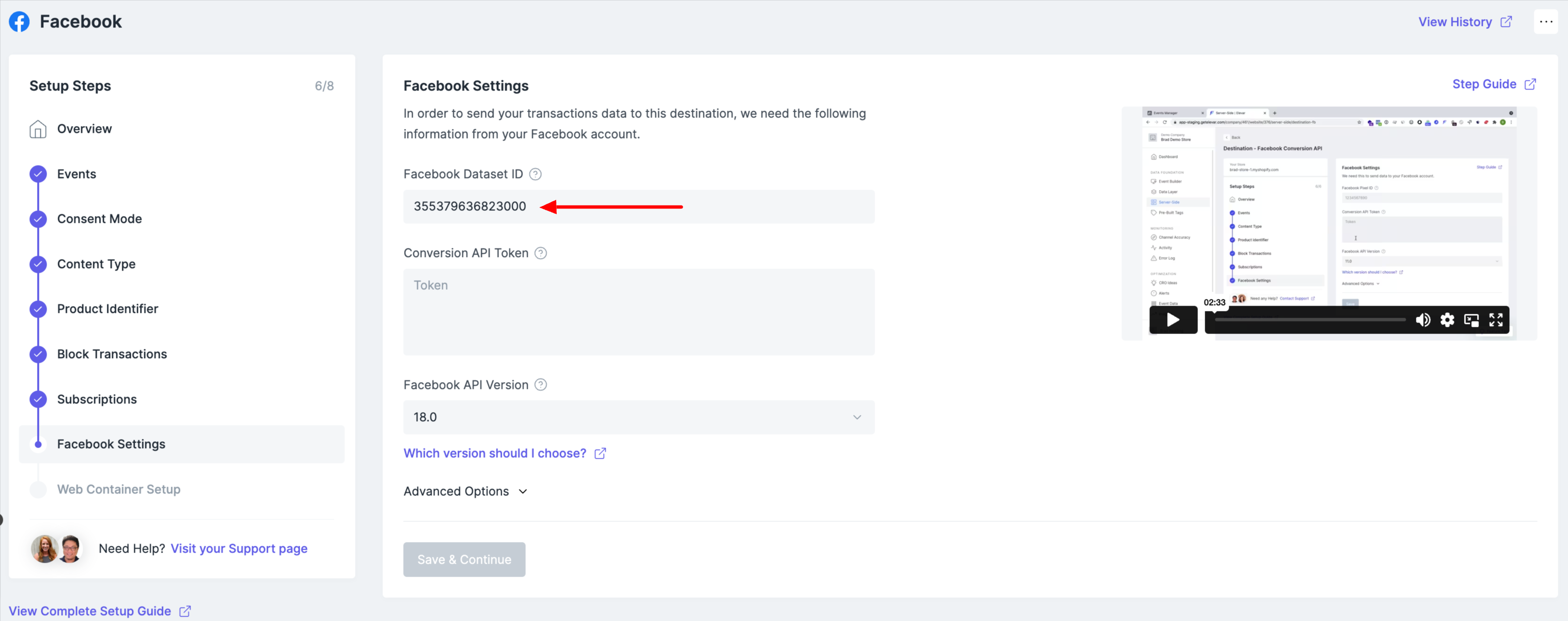
- Add in your Facebook CAPI Access Token
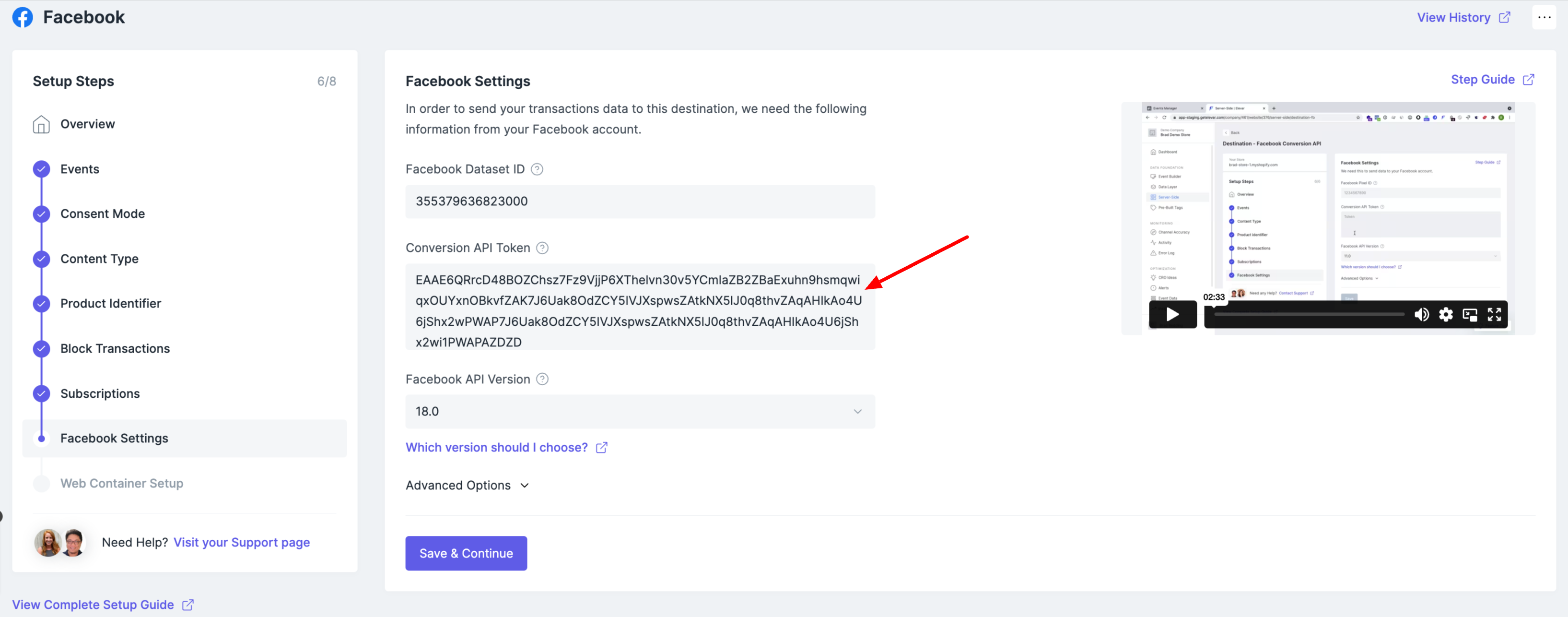
Tip: What Facebook API Version to use?
The Facebook API Version is automatically set to the latest available by default. You'll only need to adjust this if you're using an older Facebook Conversion API Token. Facebook says their Conversion API Tokens are backward compatible with previous API Versions but not forwards compatible. So you'll want to set this to the API Version that's associated with your Conversion API Token.
If you're using an older Facebook Conversion API Token & uncertain about what Facebook API Version it associates with, we'd recommend creating a new Token so that it works with the latest API Version.
- Select Save & Continue
Step 9: Web Container Setup
Select Download Pre-Built Web Tags. Then import & publish these tags in Google Tag Manager. [How do I do that?]
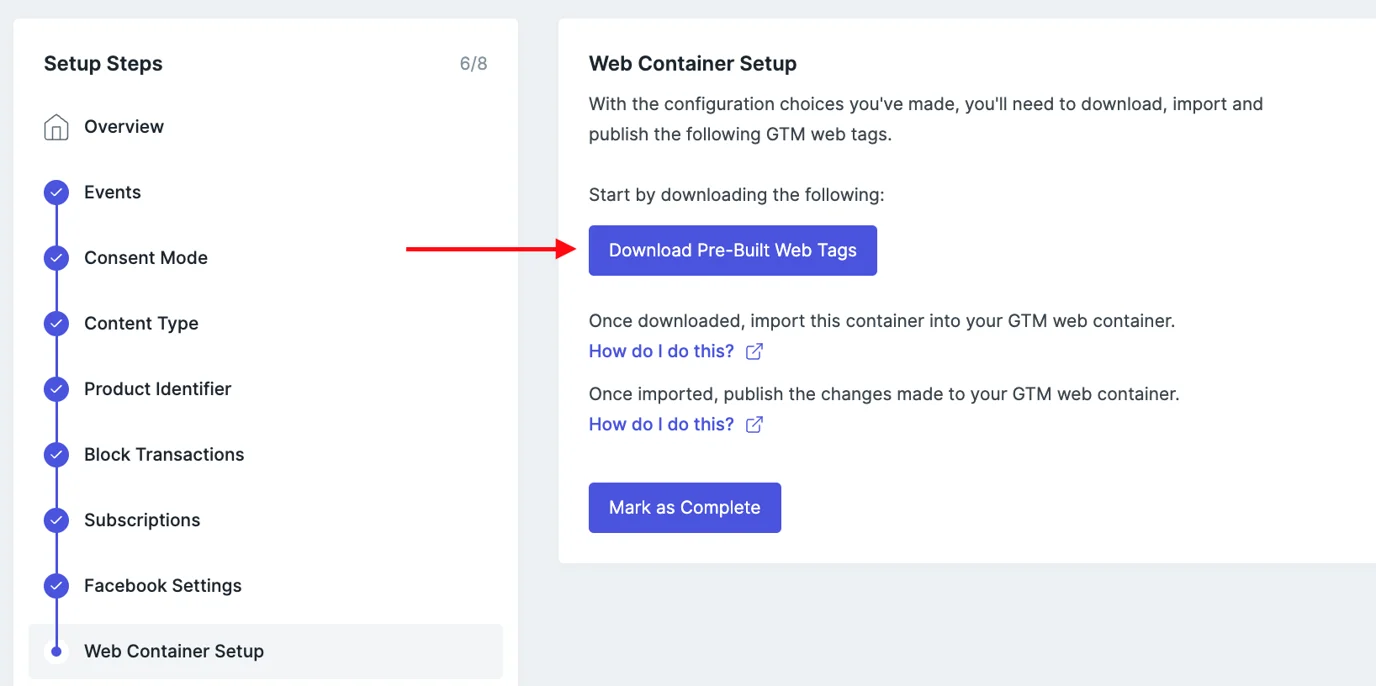
Step 10: [Optional] Test the Facebook CAPI Integration
Follow this guide for testing the Facebook CAPI Integration
Step 11: Go Live
Select Go Live on the Overview Page to launch your new Facebook CAPI tracking.

Be sure to remove any pre-existing Facebook tracking setup if you haven't already done so! (if you're using native Shopify follow this guide)
Updated about 1 month ago
